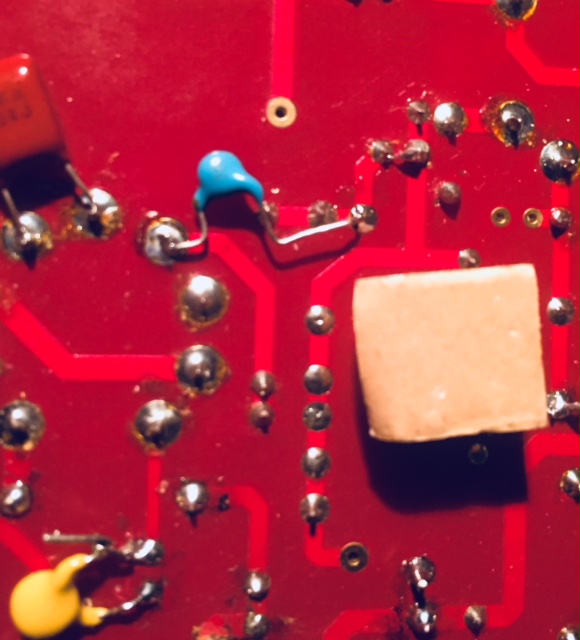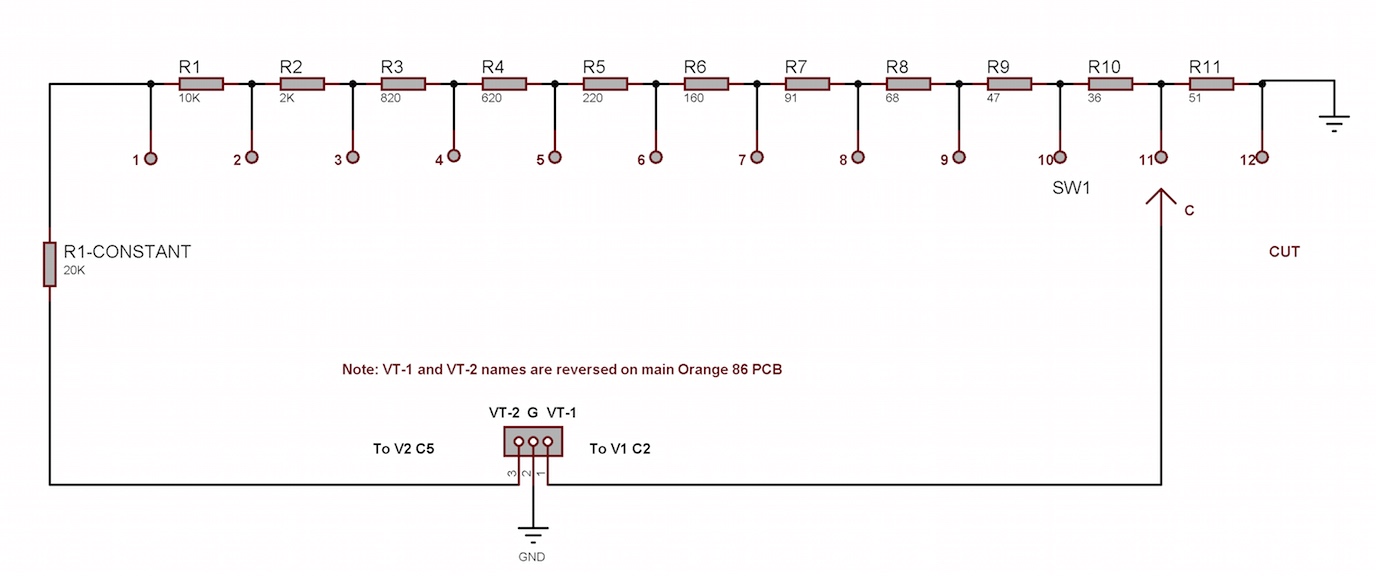I made my 'fancy' pentode choice for my next 'interpretation' , point-point, of the venerable redd / german type pre-amp .. made accessible by the Orange86 work.
...
On spec and as yet *without* testing ...
I went for the e83f ... tall-ish bottle, mesh grid, 300mA 6.3V heater, moderately high gm at 8200 umhos, 2.1W max Pd plate, with a 210V max Vscr and Vplate .. designed for 'telecomms' work .. has a specified 'hum voltage' figure ...
In this case, amperex/sylvania branded holland e83f, probably philips manufactured, gold pin 'special quality' ... 8) around 10usd each with distant delivers ... for a tested bunch of 8 off - enough to get 4 close matched and a couple of good spares.
All that and sure, I'm a big fan of the netherlands in general

but the sixties and seventies in particular, would have to have been a real experience ... electronics *tube wise* speaking.
...
Obviously, it (e83f) has a different pinout than the ef86 ... but for a point-point build, all good!
nos ef86 were just 'too damn expensiv' and I'm not confident of my chances 'bettering' the humble 6j32p with one-off or pair buys that I could afford. Forget about bunches for small $ - those days are long, long gone. The nos examples I looked at seemed to be of less-than robust looking internals!
...
re the e83f - it's known for its use in the german v76 preamp, but there it is an output pentode! not the first-stage as I plan to use it.
Comparing with the ef804 pentode, which is used in the v76 first-stage, the differences are the e83f has the higher heater current and also a significantly higher gm. The rest is pretty similar. The ef804 is yet another pinout! and it costs even more than ef86

The higher gm of the e83f can be a negative, in the sense that it can potentially increase microphonics; but a positive in that a higher gm should result in lower noise (at least in triode mode) and may also provide increased sensitivity - useful in some circuits.
In my case, I wanted something moderately high in gm because I also want to use the e83f in my latest limiter build, middle position. I reason that a 'special quality' unit with good construction will also be very usable in the first position of a mic pre. The e83f can also deliver a decent amount of current at moderate plate voltages.
...
At the line-amp end of things, I'll likely be doing a parallel'd stages 6SN7 triode with choke loading, but I will try a 6V6-triode-mode as an alternative .... one can get quite decent perf from these in a line-amp config and I'm keen to compare.
Transformers will be some old rca 20k/600 at the output, some jensen 10k/10k for line input, and some utc ouncers for mics .. something like 250/5k I think.
All have good-to-best shielding, which is great, but this is an externally powered and regulated HV, so should be really extra quiet.
The quest is on .. to 'better' the humble 6j32p/6n5p combo of my Orange86


Tally ho!
...
Winter's nearly over and the diy season is off to a good start, having finished and installed a nice, tall, solid pine rack to house all this great tube gear! Affordable 2cm pine biz with tung-oil finish .. cost me around 70usd or so all up.
I'm still up to my elbows in redo #4 of my 'deluxe' ... a pp 6V6 inst head + wcf line-amp (of above pic) .. getting there slowly ... every move now is a watch on 'hum' and 'thd' .... but I will prevail!
And my Orange86 is back on the bench

trying out some mods and once again attempt #3 of an eq+makeup module .. worthy of inclusion.
Not ruining the stellar noise perf of the stock Orange86 is my main focus here ... not easy to do with a passive eq, even with a lower-Z scaled stack and the most minimal of gain make up stages.
If necessary, I can go to solid state. I need an eq!
...
My Orange86 will also 'power' the prototyping of this new 'e83f/6sn7' combo while I dial in the perf.
This will be first time I have bothered to knock up a prototyping 'rig', where I can easily vary the operating conditions of the first-stage pentode, while watching the THD+N displays provided by the 'REW' application ... (Room EQ Wizard real-time-spectra).
ie ... varying the cathode bias voltage, plate loading and supply voltage . plus the input signal characteristics.
It's a lot more time consuming than ...
Trioda loadline simulations ...
http://trioda.com/tools/triode.html
Dang I love that site and the effort behind it :-*




















